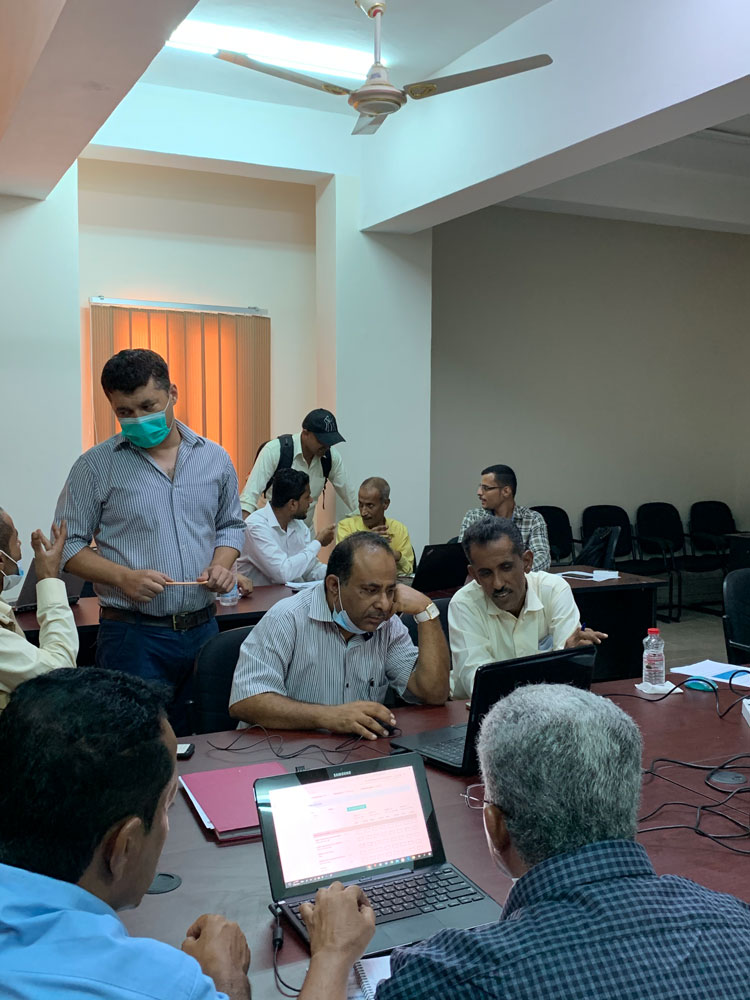 At the request of the Ministry of Public Health and Population, WHO conducted a technical mission to Yemen from August to September 2020 to provide support to strengthen the country’s surveillance capacities through the electronic Integrated Disease Early Warning System (eIDEWS) and upgrade its real-time electronic application platform. The mission focused on the southern governorates where the system has been overstretched.
At the request of the Ministry of Public Health and Population, WHO conducted a technical mission to Yemen from August to September 2020 to provide support to strengthen the country’s surveillance capacities through the electronic Integrated Disease Early Warning System (eIDEWS) and upgrade its real-time electronic application platform. The mission focused on the southern governorates where the system has been overstretched.
During the mission, the WHO team conducted training of trainers’ sessions to build capacity and reviewed eIDEWS system operations and functionality in the context of the COVID-19 pandemic response. Technical team members from central and governorate levels were trained on software data entry, data management, analytics and the interpretation of automated epidemiological bulletins with the intention of building a well-trained cadre able to conduct cascade trainings on the upgraded electronic surveillance system. Hands-on training was also provided to illustrate the complete system of data flow from health facility to district level, and from district to governorate and central levels with data validation taking place at each level.
Work was also conducted with the country surveillance team, IT technicians, data managers and health data officers to troubleshoot issues with the eIDEWS software and identify operational problems that may arise in the field.
Strengthening surveillance
eIDEWS is a health facility-based surveillance system with a network of almost 2000 health facilities covering the entire country to collect data on as many as 28 diseases. It was established in Yemen in 2013 to help rapidly identify and respond to outbreaks of priority infectious diseases. The original national disease surveillance system in Yemen had collapsed as a result of conflict and its functions had been integrated into eIDEWS to ensure efficient data collection, analysis and public health response to outbreaks.
The system currently collects data from sentinel sites using mobile cellular software and sends it to district, governorate and central surveillance offices. The year 2019 saw the plan to overhaul and upgrade the real-time electronic application platform, with the addition of a series of new and enhanced reporting and automated output features. The plan is to expand the surveillance system of the early warning, alert and response network (EWARN) to include more sentinel sites, as well as to roll out the upgraded electronic system.
The COVID-19 outbreak has put a severe strain on the eIDEWS operations and reporting system and highlighted a need to strengthen its functionality and flexibility in addressing the reporting and response requirements as a result of COVID-19. WHO plans to conduct further support missions to Yemen under the EWARN project, which is an initiative to strengthen disease early warning, alert and response in emergency countries of the Region.
Related links
WHO missions supporting Yemen to fight COVID-19
Updating the EWARN evaluation protocol for the Region
Evaluating Yemen’s disease surveillance and early warning system


